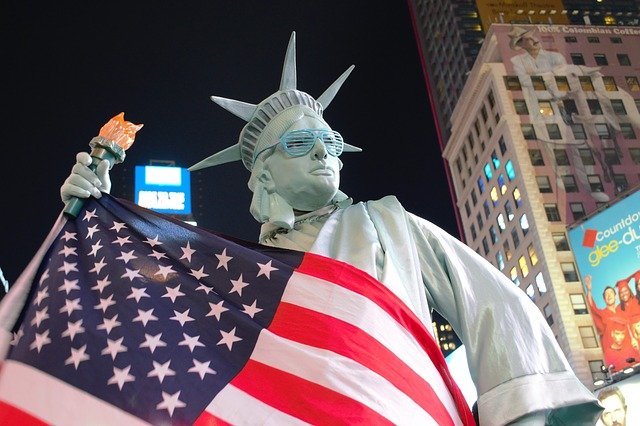Chaos from election
Chaos from election The 2020 U.S. election is regarded as one of the sharpest and most divided elections in American history. Its stagment and abnormality reflect the governance revolt of the U.S. government over the past four years or even more. The growing political rift, the out-of-control of control of the coronavirus epidemic and the imbalance of economic development are the main manifestations of the governance turmoil.
Political rifts increase
Political rifts increase The governance turmoil of the U.S. government is firstly reflected in the widening of political rifts. Twenty days have passed since the voting day of the U.S. election on November 3. Emily Murphy, director of the U.S. General Administration, informed Democrats, former Vice President Biden and his team on the 23rd that the Republican current President Trump administration is ready to officially start the regime transition process. Trump confirmed the news on social media late that night, while saying that he would continue to fight to challenge the election results.
Trump supporters held a march in Washington, D.C., to clash with opponents. One Trump supporter and two police officers were injured and at least 20 people were arrested.
The political rift in the United States has also seen one after another in the executive, legislative and judicial fields. In the wave of national protests triggered by the violent death of an African-American man Freud by police earlier this year, the two parties are divided on how to deal with the situation; the rescue plan under the coronavirus pandemic is difficult to pass Congress due to the wide differences between the two parties; Trump nominated conservative judge Amy Kony Barrett as The justices of the Federal Supreme Court have also triggered a heated party dispute.
Coronavirus out of control in US
Coronavirus out of control in US This year’s election is held against the backdrop of a large-scale outbreak of the coronavirus in the United States and long-term uncontrollable. The out-of-control epidemic not only profoundly reshaped the election process, but also became another example of the governance turmoil of the U.S. government.
According to Johns Hopkins University, as of the evening of the 22nd, more than 12 million people in the United States have been diagnosed with the novel coronavirus, and more than 250,000 people have lost their lives as a result. According to the data of the Centers for Disease Control and Prevention, since November, the number of confirmed cases in the United States has continued to soar to more than 100,000 in a single day, and reached a new high of 192,673 on the 20th.
It is worth noting that racial inequality in the United States has once again been highlighted during the COVID-19 outbreak. Minorities such as African-Americans and Hispanics account for more than whites in the persistently high number of confirmed cases, hospitalizations and deaths of the novel coronavirus. The data shows that the number of confirmed cases, hospitalizations and deaths of African-Americans is 2.6 times, 4.7 times and 2.1 times that of whites, respectively, and the relevant data of Latinos are 2.8 times, 4.6 times and 1.1 times that of whites, respectively.
Unbalanced social development
Unbalanced social development The impact of the epidemic on minorities goes far beyond that. From an economic point of view, the imbalance in the development of the people at the bottom of the United States, including some ethnic minorities, is the third manifestation of the governance turmoil of the United States government. Take employment as an example. Unemployment data released by the U.S. Department of Labor in October showed that the U.S. job market remains fragile under the impact of the coronavirus epidemic, and more minority Americans are “unable to breathe” under the heavy pressure of the coronavirus.
The data shows that the unemployment rates of different ethnic groups, such as African descent, Hispanic and white people, are 10.8%, 8.8% and 6%, respectively. Congress’s delay in reaching agreement on a new fiscal stimulus plan has greatly limited the flow of funds to the unemployed and small businesses affected by the epidemic, and the prospects for a balanced recovery in the job market continue to be bleak.
Experts believe that the epidemic has exacerbated the survival crisis of the people at the bottom of the United States, but the middle-class crisis caused by the unequal distribution of wealth in American society has long existed and continues to worsen, causing social and political unrest. Chris Baskirk, editor of the American conservative website “America’s Great”, pointed out that the uneven distribution of wealth is caused by stagnation in real wage growth and other structural problems that have lasted for nearly half a century, which is likely to create an unsustainable situation.



